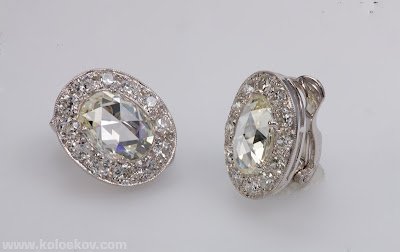Jewellery Photography Biogarphy
Source(google.com.pk)Navette style rings
Memento Mori jewelry–made from locks of hair of loved ones
Ribbons/Bows–often having a pear-shaped gemstones
Starburst and Flower brooches
Cameos–carving shell, onyx, carnelian was very popular; Napoleon founded a carving school because he was so fond.
Roman mosaics “Mille-Fiore” taking semi-precious stones and inlaying them in black onyx
Ferronieres–were head ornaments worn with a jewel that sat on the forehead. It was a fad of short duration during the Georgian and Victorian eras. Once the style was over many pieces were remade into necklaces or bracelets.
Crowned Heart design–symbolized the importance of love’s rule over one’s life.
flowers, Greek key, laurel leaves, scroll work, eagles, Egyptian symbols, urns and acorns
Important People of the Time:
Benedetto Pistrucci–talented carver of gemstones and cameos
Robert Adam–his architecture work and designs influenced neo-classicism in jewelry arts
Life during this time period was often short, due to poor sanitation, poor medicines with diseases spread easily/quickly. The contrast of the small number of people who were rich and the many poor was very distinct–most people were never able to afford jewelry, but those few who did were extravagant and lived a life of luxury. So, if you are lucky enough to own or purchase a piece of jewelry from the Georgian Era, it probably once belonged to someone very privileged
Whenever I give a presentation on antique and costume jewelry, it's often followed by a session on identifying pieces from the audience. Usually the first question I am asked is, "What is this thing anyway?" This is closely followed by questions about age, value and proper care of the piece. This short article is to help you begin to answer some of these questions.
The first issue that needs to be addressed is the difference between antique and costume jewelry. Most scholars tend to define the word "antique" as something a certain number of years old. To be entered onto the National Register of Historic Places, for example, a building must be at least fifty years old. Most jewelry book authors tend to consider anything dating before the 1930s as antique.
Costume jewelry is usually defined as beginning in the 1930s, although this is a bit misleading. It is true that cheap, disposable jewelry meant to be worn with specific outfits or costumes began to appear in great quantities in the 1930s. This type of jewelry, called "costume," was not meant to be handed down through the generations. Rather, it was presumed to be fashionable only for a short period of time, and then the wearer would purchase new, matching jewelry when she bought a new outfit. The now-outdated pieces would languish in the back of jewelry boxes or be given to young girls to play dress-up
Jewellery Photography

Jewellery Photography

Jewellery Photography

Jewellery Photography

Jewellery Photography

Jewellery Photography

Jewellery Photography

Jewellery Photography

Jewellery Photography

Jewellery Photography

Jewellery Photography
No comments:
Post a Comment